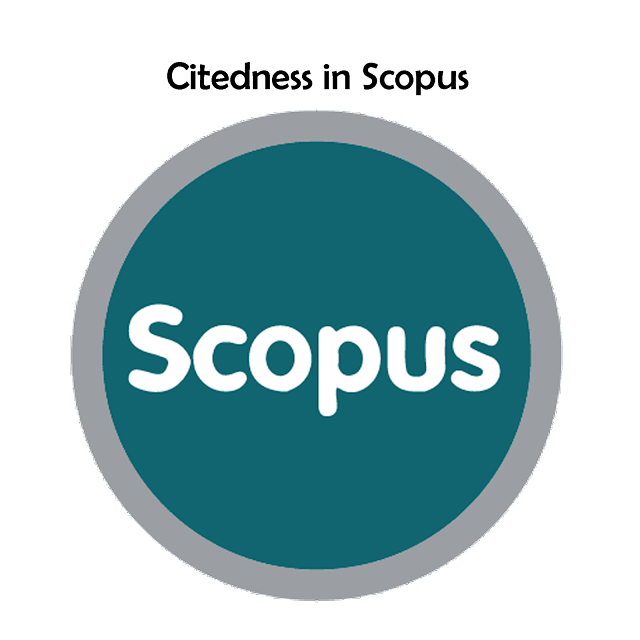Evaluation of Multi-Class Classification Performance Lung Cancer Through K-NN and SVM Approach
Muh. Indra Endriartono Saputra Troy(1*); Sitti Rahmah Jabir(2); Siska Anraeni(3);
(1) Universitas Muslim Indonesia
(2) Universitas Muslim Indonesia
(3) Universitas Muslim Indonesia
(*) Corresponding Author
AbstractLung cancer is one of the deadliest diseases in the world with a mortality rate of 25% of all cancer-related deaths in 2021. Lung cancer is a lung disease caused by genetic changes in respiratory epithelial cells, resulting in uncontrolled cell proliferation. In an effort to improve diagnosis and treatment, this study proposes an approach for multiclass performance evaluation using K-Nearest Neighbors (KNN) and Support Vector Machine (SVM) algorithms based on 2024 data. in this study KNN is implemented conventionally while SVM applies 2 kernel processes, namely Linear and Polynominal. The data used is 1000 rows and uses 24 variables with a ratio of 70% training data and 30% testing data, the data in this study includes important information such as medical history, diagnostic test results, and clinical characteristics of patients. this study aims to determine which algorithm has the best performance by looking at the final results based on accuracy in identifying lung cancer data. Based on the research and discussion of SVM and KNN performance evaluation, the SVM algorithm produces an accuracy of 98.28%, surpassing the accuracy of the KNN algorithm of 97.25%. Therefore, the results show that the SVM algorithm is superior to the KNN algorithm. The KNN and SVM methods were implemented for multi-class classification of lung cancer, allowing identification of various subtypes of lung cancer with optimal accuracy.
KeywordsK-Nearest Neighbors; Lung Cancer; Support Vector Machine.
|
Full Text:PDF |
Article MetricsAbstract view: 466 timesPDF view: 158 times |
Digital Object Identifier https://doi.org/10.33096/ilkom.v17i1.2464.27-33 https://doi.org/10.33096/ilkom.v17i1.2464.27-33
|
Cite |
References
J. Alam, S. Alam, and A. Hossan, “Multi-stage lung cancer detection and prediction using multi-class svm classifie,” in 2018 International conference on computer, communication, chemical, material and electronic engineering (IC4ME2), IEEE, 2018, pp. 1–4. doi: 10.1109/IC4ME2.2018.8465593.
S. Kumar, H. Kumar, G. Kumar, S. P. Singh, A. Bijalwan, and M. Diwakar, “A methodical exploration of imaging modalities from dataset to detection through machine learning paradigms in prominent lung disease diagnosis: a review,” BMC Med. Imaging, vol. 24, no. 1, pp. 1–42, 2024, doi: 10.1186/s12880-024-01192-w.
E. Taucher, I. Mykoliuk, J. Lindenmann, and F. M. Smolle-Juettner, “Implications of the Immune Landscape in COPD and Lung Cancer: Smoking Versus Other Causes,” Front. Immunol., vol. 13, no. March, pp. 1–18, 2022, doi: 10.3389/fimmu.2022.846605.
R. Nooreldeen and H. Bach, “Current and future development in lung cancer diagnosis,” Int. J. Mol. Sci., vol. 22, no. 16, pp. 2163–2169, 2021, doi: 10.3390/ijms22168661.
K. C. Thandra, A. Barsouk, K. Saginala, J. S. Aluru, and A. Barsouk, “Epidemiology of lung cancer,” Wspolczesna Onkologia, vol. 25, no. 1. Termedia Publishing House Ltd., pp. 45–52, 2021. doi: 10.5114/wo.2021.103829.
H. S. Choi, B. K. Jeong, H. Jeong, I. B. Ha, and K. M. Kang, “Role of radiotherapy in the management of malignant airway obstruction,” Thorac. Cancer, vol. 11, no. 8, pp. 2163–2169, 2020, doi: 10.1111/1759-7714.13523.
P. A. Grenier, A. L. Brun, and F. Mellot, “The Potential Role of Artificial Intelligence in Lung Cancer Screening Using Low-Dose Computed Tomography,” Diagnostics, vol. 12, no. 10, pp. 1–13, 2022, doi: 10.3390/diagnostics12102435.
M. Yağcı, “Educational data mining: prediction of students’ academic performance using machine learning algorithms,” Smart Learn. Environ., vol. 9, no. 1, 2022, doi: 10.1186/s40561-022-00192-z.
H. Mydyti, “Data Mining Approach Improving Decision-Making Competency along the Business Digital Transformation Journey: A Case Study – Home Appliances after Sales Service,” SEEU Rev., vol. 16, no. 1, pp. 45–65, 2021, doi: 10.2478/seeur-2021-0008.
M. Bansal, A. Goyal, and A. Choudhary, “A comparative analysis of K-Nearest Neighbor, Genetic, Support Vector Machine, Decision Tree, and Long Short Term Memory algorithms in machine learning,” Decis. Anal. J., vol. 3, no. May, p. 100071, 2022, doi: 10.1016/j.dajour.2022.100071.
K. B. C and N. K. B, “Image Processing-based Performance Evaluation of KNN and SVM Classifiers for Lung Cancer Diagnosis,” Int. J. Adv. Comput. Sci. Appl., vol. 15, no. 5, 2024, doi: 10.14569/IJACSA.2024.0150546.
P. Chaturvedi, A. Jhamb, M. Vanani, and V. Nemade, “Prediction and Classification of Lung Cancer Using Machine Learning Techniques,” IOP Conf. Ser. Mater. Sci. Eng., vol. 1099, no. 1, p. 012059, Mar. 2021, doi: 10.1088/1757-899x/1099/1/012059.
R. K. Sachdeva, P. Bathla, P. Rani, R. Lamba, G. S. P. Ghantasala, and I. F. Nassar, “A novel K-nearest neighbor classifier for lung cancer disease diagnosis,” Neural Comput. Appl., vol. 36, no. 9, 2024, doi: 10.1007/s00521-024-10235-w.
V. Çetin and O. Yıldız, “A Comprehensive Review On Data Preprocessing Techniques In Data Analysis,” Pamukkale Univ. J. Eng. Sci., vol. 28, no. 2, pp. 299–312, 2022, doi: 10.5505/pajes.2021.62687.
K. Maharana, S. Mondal, and B. Nemade, “A Review: Data Pre-Processing and Data Augmentation Techniques,” Glob. Transitions Proc., vol. 3, no. 1, pp. 91–99, 2022, doi: 10.1016/j.gltp.2022.04.020.
A. Jaiswal and A. Dwivedi, “Python: The Versatile Language-Recent Trends in Programming Languages Recent Trends in Programming Languages Python: The Versatile Language,” STM Journals, vol. 8, no. 1, p. 2021, 2021, doi: 10.37591/RTPL.
A. Ramesh, B. Dileep, A. Naveen, Y. Manoj, and V. Vijay, “Prediction At Early-Stages Using Machine Learning,” Int. J. Progress. Res. Eng. Manag. Sci., vol. 04, no. 04, pp. 308–316, 2024.
S. Saabith, T. Vinothraj, and M. Fareez, “A review on Python libraries and Ides for Data Science,” Int. J. Res. Eng. Sci, vol. 9, no. 11, pp. 36–53, 2021.
A. A. S. Arip, K. Sazali, K Norazlianie, and N. Jamaludin, T Ahmad, M Faiz, Ab. Razak, “Object Detection for Safety Attire Using YOLO (You Only Look Once),” J. Adv. Res. Appl. Mech., vol. 113, no. 1, pp. 37–51, 2024, doi: 10.37934/aram.113.1.3751.
A. Aisyah and S. Anraeni, “Analisis Penerapan Metode K-Nearest Neighbor (K-NN) pada Dataset Citra Penyakit Malaria,” Indones. J. Data Sci., vol. 3, no. 1, pp. 17–29, 2022, doi: 10.56705/ijodas.v3i1.22.
S. Anraeni, E. R. Melani, and H. Herman, “Ripeness identification of chayote fruits using HSI and LBP feature extraction with KNN classification,” Ilk. J. Ilm., vol. 14, no. 2, pp. 150–159, 2022, doi: 10.33096/ilkom.v14i2.1153.150-159.
P. M. Arabi, “Computer Aided Classification of Lung Cancer, Ground Glass Lung and Pulmonary Fibrosis Using Machine Learning and KNN Classifier,” 2024. doi: 10.14569/IJACSA.2024.01507111.
N. Maleki, Y. Zeinali, and S. T. A. Niaki, “A k-NN method for lung cancer prognosis with the use of a genetic algorithm for feature selection,” Expert Syst. Appl., vol. 164, Feb. 2021, doi: 10.1016/j.eswa.2020.113981.
A. R. Isnain, J. Supriyanto, and M. P. Kharisma, “Implementation of K-Nearest Neighbor (K-NN) Algorithm For Public Sentiment Analysis of Online Learning,” IJCCS (Indonesian J. Comput. Cybern. Syst., vol. 15, no. 2, p. 121, Apr. 2021, doi: 10.22146/ijccs.65176.
Amaliah Faradibah, Dewi Widyawati, A Ulfah Tenripada Syahar, and Sitti Rahmah Jabir, “Comparison Analysis of Random Forest Classifier, Support Vector Machine, and Artificial Neural Network Performance in Multiclass Brain Tumor Classification,” Indones. J. Data Sci., vol. 4, no. 2, pp. 54–63, Jul. 2023, doi: 10.56705/ijodas.v4i2.73.
M. M. Taye, “Theoretical Understanding of Convolutional Neural Network: Concepts, Architectures, Applications, Future Directions,” Computation, vol. 11, no. 3, 2023, doi: 10.3390/computation11030052.
S. R. Jabir, Purnawansyah, H. Darwis, H. Lahuddin, A. Faradibah, and A. W. M. Gaffar, “Evaluation of Tourism Object Rating Using Naïve Bayes, Support Vector Machine, and K-Means for Business Intelligence Application in Indonesia Tourism,” Proc. 2024 18th Int. Conf. Ubiquitous Inf. Manag. Commun. IMCOM 2024, 2024, doi: 10.1109/IMCOM60618.2024.10418390.
K. N. S Khan, U. Samra, H. Aznaoui, C. B. Şahin, and Ö. B. Dinler, “Generalization of Linear and Non-Linear Support Vector Machine In Multiple Fields: A Review,” Comput. Sci. Inf. Technol., vol. 4, no. 3, pp. 226–239, 2023, doi: 10.11591/csit.v4i3.pp226-239.
U. Amelia, J. Indra, and A. F. N. Masruriyah, “The Classification Of Stroke Prediction Using The Support Vector Machine (SVM) Method,” Sci. Student J. Information, Technol. Sci., vol. III, no. 2, pp. 254–259, 2022.
A. Tasnim, M. Saiduzzaman, M. A. Rahman, J. Akhter, and A. S. M. M. Rahaman, “Performance Evaluation of Multiple Classifiers for Predicting Fake News,” J. Comput. Commun., vol. 10, no. 09, pp. 1–21, 2022, doi: 10.4236/jcc.2022.109001.
Refbacks
- There are currently no refbacks.
Copyright (c) 2025 Muh. Indra Endriartono Saputra Troy, Sitti Rahmah Jabir, Siska Anraeni

This work is licensed under a Creative Commons Attribution-ShareAlike 4.0 International License.







